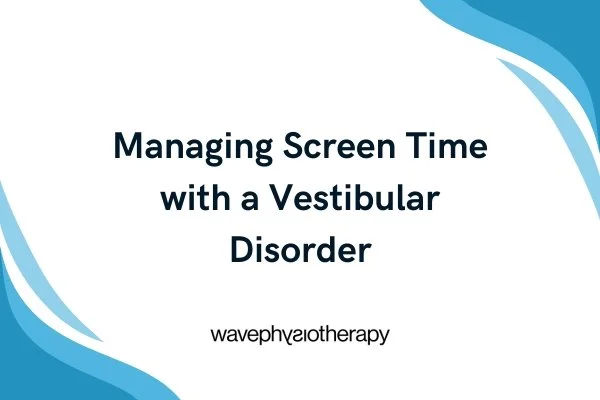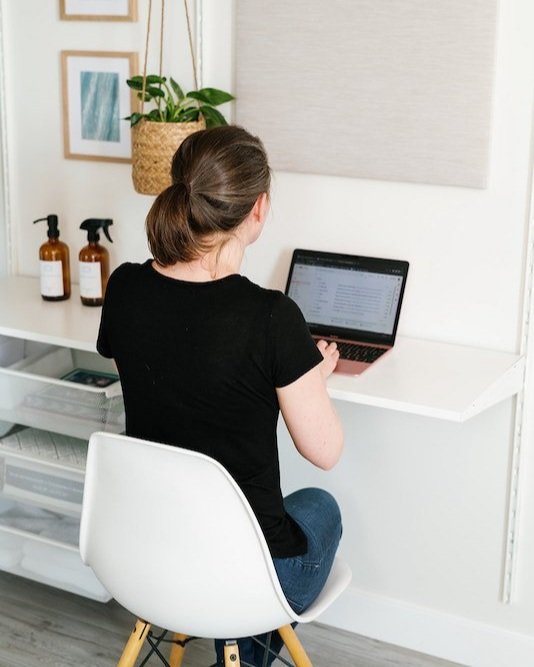Managing Screen Time with a Vestibular Disorder
Vestibular disorders are associated with a number of different symptoms: dizziness, vertigo, light sensitivity, motion sensitivity, nausea, and fatigue to name a few. Figuring out how to approach screen time when you or your child are not feeling well can be incredibly challenging.
As a vestibular physiotherapist, I often hear that time on a computer, tablet or phone hasn’t been going smoothly. With so much of our work and school activities being digital, screen sensitivity can drastically limit what someone can get done each day.
Working on improving your screen time tolerance can be challenging if you don’t have guidance from a vestibular therapist on how to help yourself feel more comfortable. To help this process go more smoothly, here are my tips for managing screen time with a vestibular disorder
Manage your screen’s blue light
One of the quickest and easiest changes to make is to reduce exposure to blue light from your device’s screen. I recommend using a physical blue light filter or wearing blue light-blocking glasses to help minimize eye strain.
You can also check your device and see what you can modify in its display and accessibility settings. Most devices have a “night mode” which changes the screen colour to a yellow hue. This decreases your blue light exposure and may improve comfort while using screens.
Use good lighting when on screens
It’s important to consider the lighting in your space when using screens:
Use task lighting around your computer screens, especially when it’s dark outside.
Keep the lights on when watching TV
Sit in the light of a lamp while using a tablet or phone
When you aren’t able to use additional lighting, dim your screen’s brightness to help you feel more comfortable.
Take regular breaks
Set a timer to make sure you are using regular breaks during screen time. This will help to minimize symptom aggravation and allow you to complete multiple sessions of screen time in a row.
A common guideline is the 20-20-20 rule. After 20 minutes look at a target 20 feet away for 20 seconds.
If you aren’t able to tolerate a 20-minute session yet, start with 5-15 minutes of screen time (symptoms allowing) followed by a minimum 5-minute break. As long as symptoms have settled after your break, you can try an additional session.
Make font sizes larger
Consider increasing the magnification or font size of text on your screen, especially if you will be on screen for longer periods. Increasing the size will mean you see less text at one time, but will also allow you to read the information on the screen more easily. This makes it easier on your eyes and will help you feel more comfortable.
Note: for folks experiencing symptoms of double or blurry vision, look at adapting your font size or magnification to a size where the text looks the sharpest for you. In some cases, this may mean keeping the text smaller, and using a smaller screen (such as a laptop screen) to improve your visual comfort.
Limit scrolling when possible
Having to scroll through text on a screen can be very triggering, especially for those who are experiencing motion sensitivity. If you’ve been having a hard time tolerating scrolling consider using page down & page up keys instead of scrolling up or down on your screen.
On a Mac? Use the Fn-Up Arrow and Fn-Down Arrow combinations.
I hope you find these tips help your screen time go more smoothly. If you’re interested in speaking more about how vestibular physiotherapy can help you or your child feel better, click here to contact me or use the button below to book a free consult call.
Updated: June 2, 2025


